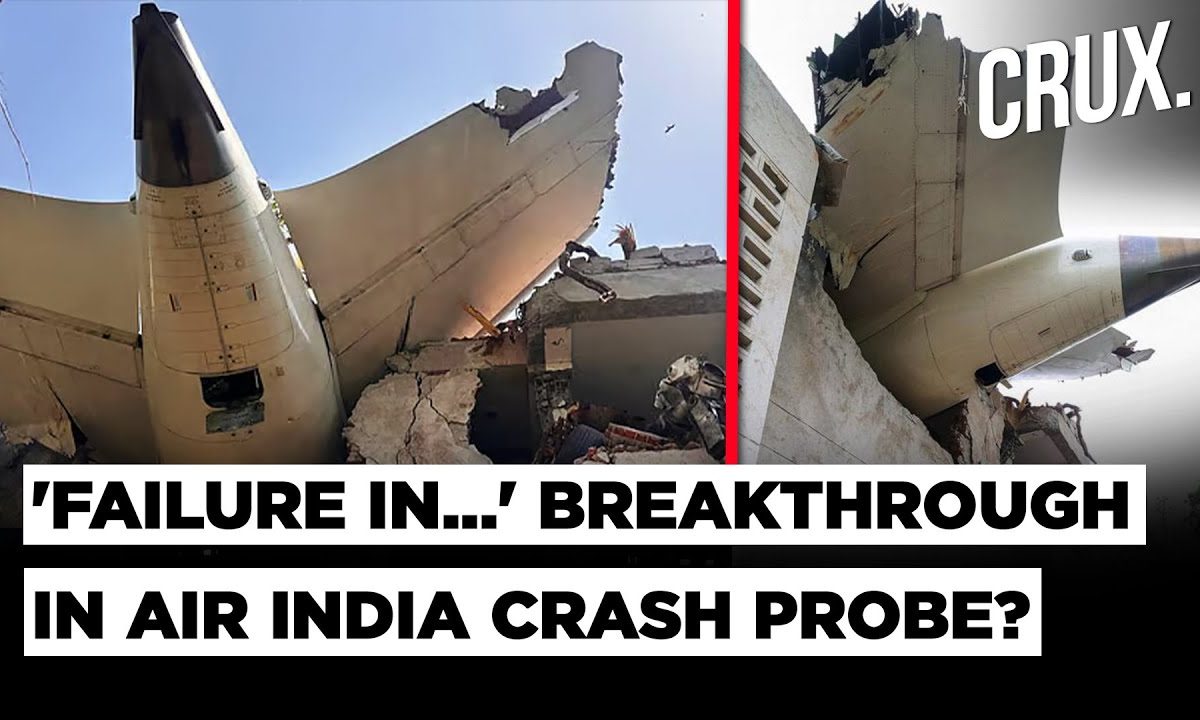

The investigation into the tragic crash of Air India Flight 171, a Boeing 787-8 Dreamliner that crashed shortly after takeoff from Ahmedabad on June 12, 2025, killing 272 people, has taken a new turn with the emergence of evidence suggesting a possible double engine failure. The presence of a deployed Ram Air Turbine (RAT) is now considered a critical clue.
Initial reports following the crash focused on various potential causes, including flap malfunction, fuel contamination, or a bird strike. However, recent analysis of enhanced video footage by aviation experts, most notably Captain Steve Schreiber, has shifted the focus towards the possibility of a rare dual-engine failure. Schreiber, drawing from his 26 years of flying experience, identified a "protrusion" and a "little grey dot" on the aircraft's underbelly in the video, which he believes indicates the deployment of the RAT.
The Ram Air Turbine is a small, wind-powered turbine that automatically deploys when an aircraft loses its primary power sources, typically in situations where all engines cease operating. When deployed, the RAT uses the oncoming airflow to generate emergency electrical and hydraulic power, enabling essential systems such as flight controls, cockpit lighting, and hydraulics to function. As one source explains, there are three scenarios that would cause the RAT to deploy automatically: a massive electrical failure, a massive hydraulic failure, or a dual engine failure.
The deployment of the RAT is not a standard occurrence during normal flight operations. Its activation suggests a severe power loss, and the fact that it seems to have deployed shortly after takeoff raises serious questions about the performance of the aircraft's engines. Captain Steve Scheibner also analyzed audio from the crash video, identifying a distinct “high-pitched squeal” in the background. He links the sound to the RAT's two-bladed turbine spinning at high speed to generate emergency power.
If both engines failed, it would explain why the landing gear was never retracted, as some pilots have suggested. One theory points to a failure of Variable Frequency Starter Generators (VFSGs), which are essential for providing electrical power and engine start-up. A failure in these components could have potentially disabled the Electronic Engine Controls (EECs), effectively the "throttle computers" of the jet, leaving the pilots unable to control engine thrust.
While the Aircraft Accident Investigation Bureau (AAIB) continues its investigation, aided by teams from the U.S. National Transportation Safety Board (NTSB) and the U.K., the focus has shifted towards understanding why such a catastrophic engine failure might have occurred. Both the Flight Data Recorder (FDR) and the Cockpit Voice Recorder (CVR) have been recovered and are being analyzed. The date from the black boxes will be sent to Boeing for diagnostics.
The crash has also brought renewed attention to Boeing and Air India, both of which have faced scrutiny in recent years. The incident has raised concerns about the safety and maintenance of the Boeing 787 Dreamliner, even though the model had maintained a relatively strong safety record until now. For Air India, the crash represents a setback in its efforts to rebrand and modernize after years of financial struggles.
In the wake of the crash, Indian authorities have directed Air India to conduct additional safety checks on its entire fleet of Boeing 787s. The investigation is ongoing, and authorities are exploring all possible factors that may have contributed to the disaster.